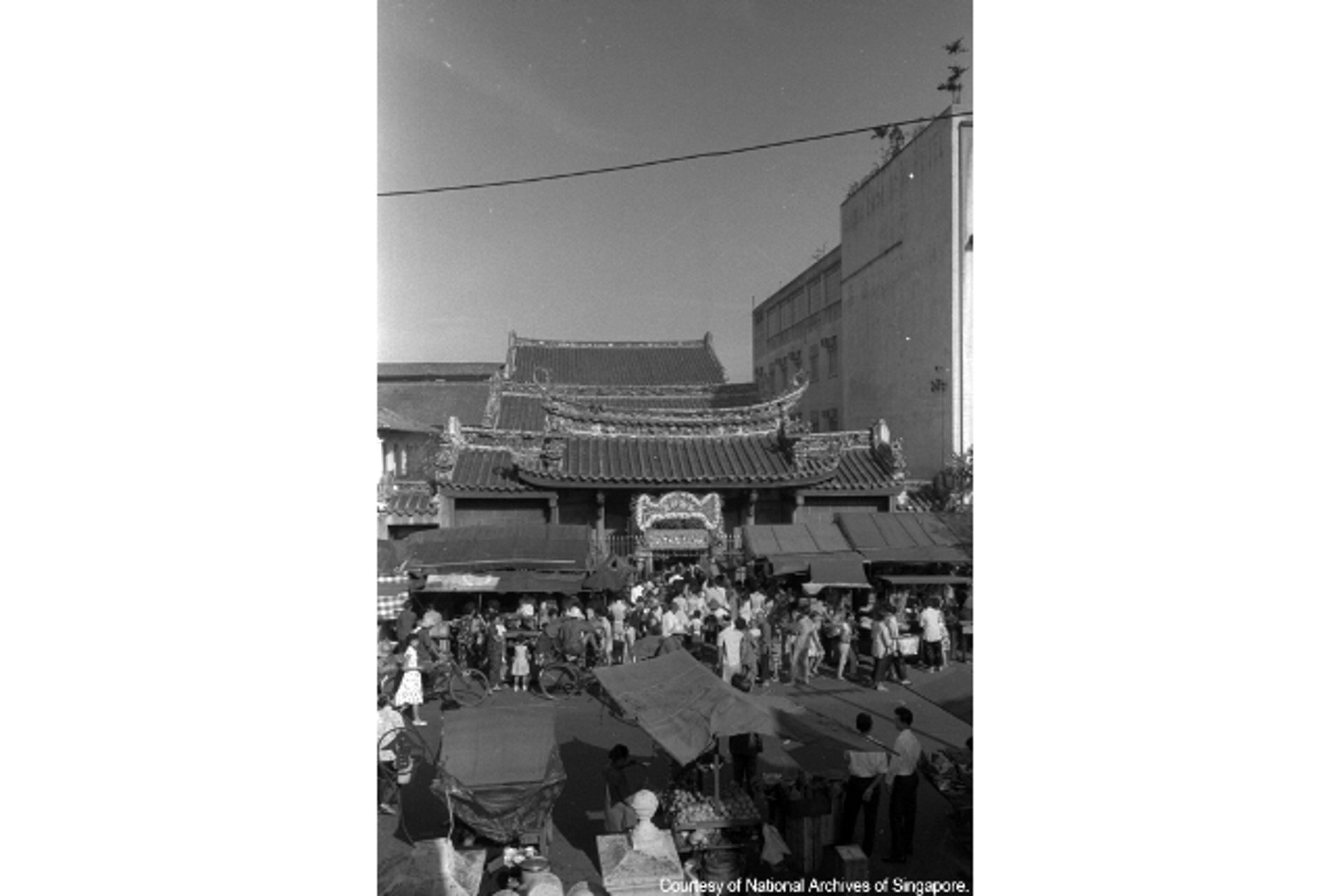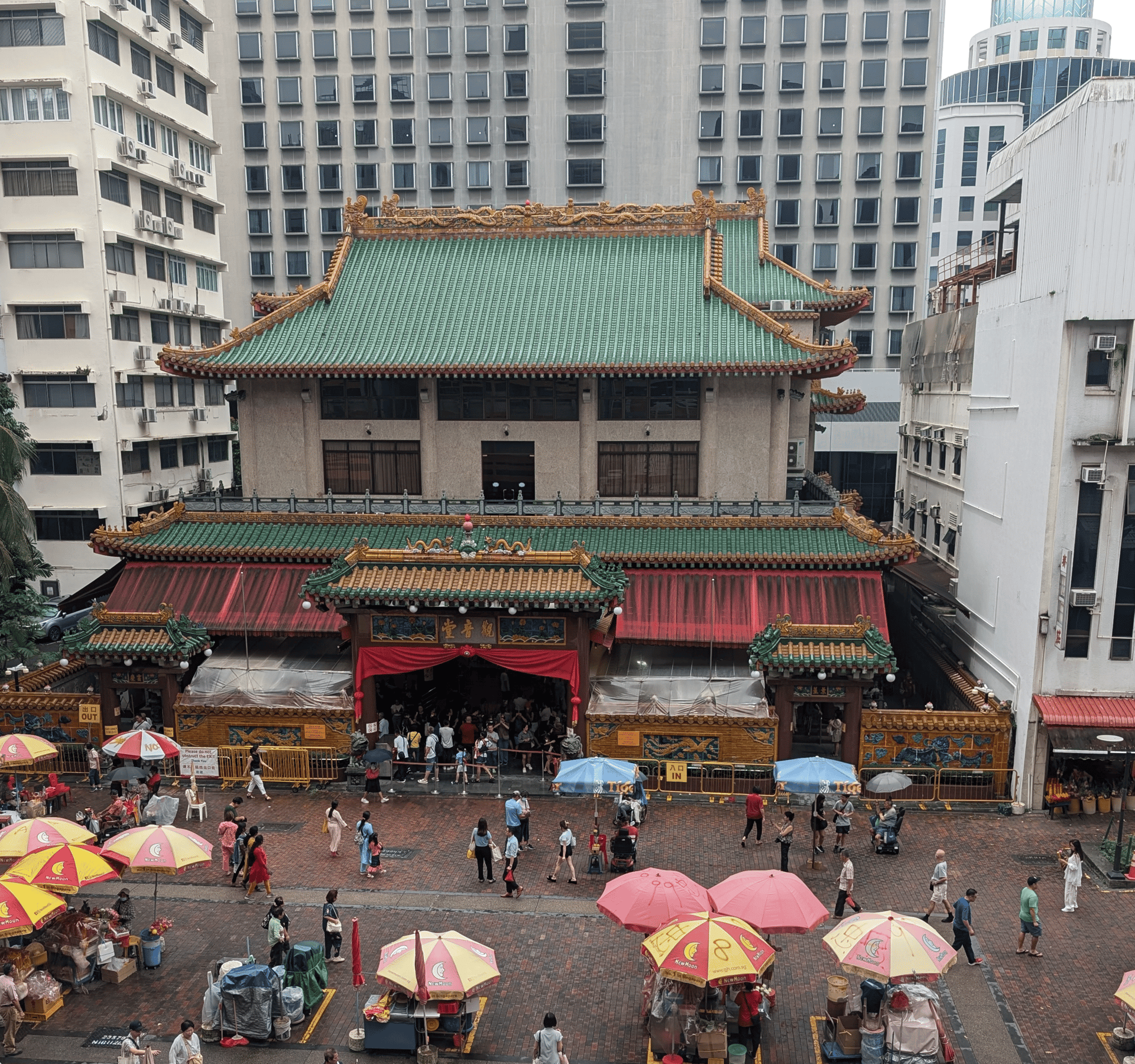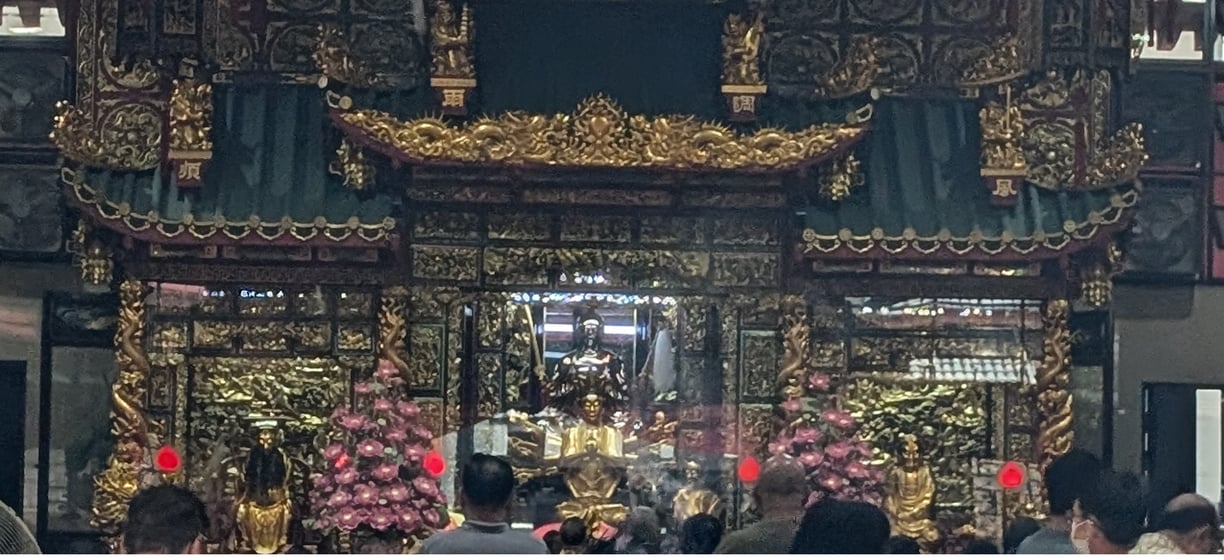
History
Kwan Im Thong Hood Cho Temple (觀音堂佛祖廟) is a historic Chinese temple located at 178 Waterloo Street in Singapore. Dedicated primarily to Guan Yin, the Chinese Goddess of Mercy, it is a revered site for devotees seeking blessings and good fortune. Built in 1884, the temple is one of Singapore’s oldest Buddhist temples and a fine example of late 19th-century Chinese courtyard temple architecture.
The temple plays a significant role within the Buddhist community, particularly among Chinese Singaporeans. In addition to Guan Yin, the temple houses altars to other notable deities, including Da Mo, the first patriarch of Chan (Zen) Buddhism, and Hua Tuo, a renowned Han-dynasty physician and the patron saint of medicine.
Throughout its history, the temple has undergone significant changes. In 1895, it was expanded with alterations and additions. Later, it was demolished in the late 1970s and rebuilt in 1982 to accommodate modern needs while retaining its spiritual significance. In 2001, the National Heritage Board declared it a historic site.
During the Japanese Occupation of Singapore (1942–1945), the temple served as a refuge for many seeking solace and protection amidst the turmoil.
Welcome to Kuan Yin Temple @ Waterloo, Singapore
Background IMAGE Credits from National Archive Singapore

Short Stories
Here are some intriguing stories about the Temple:
Miraculous Protection During the War
During the Japanese occupation of Singapore in World War II, Japanese warplanes bombed the Waterloo Street area heavily. Despite the devastation around it, the Kwan Im Thong Hood Cho Temple miraculously remained unscathed, leading many to believe it was under divine protection. This event further cemented its status as a sacred and auspicious place for worship.A Place of Refuge and Hope
Amid the chaos of the Japanese occupation, the temple became a sanctuary for the desperate and displaced. Worshippers and locals flocked to its grounds, praying for safety and guidance during turbulent times. The temple provided not just spiritual solace but also tangible support, distributing food and resources to those in need.Kuan Yin’s Intervention in a Business Crisis
Another well-known story involves a local businessman in the 1950s who claimed his failing enterprise was revived after he prayed at the temple and drew a lot from its divination sticks. Following the guidance interpreted by a temple elder, he made significant changes to his business, which soon flourished. To show his gratitude, he became a lifelong patron of the temple, inspiring others to trust in the goddess’s wisdom.The Unbreakable Altar Statue
One famous tale tells of a statue of Kuan Yin on the temple's main altar that remained undamaged during the temple’s reconstruction in the 1980s. Despite being carefully dismantled, workers reportedly found the statue impossibly resistant to harm, leading to the belief that the goddess herself was protecting it. This story is often shared among devotees as a testament to the temple’s spiritual power.Healing Miracles Through Hua Tuo
The temple’s altar dedicated to Hua Tuo, the Han-dynasty doctor and patron saint of medicine, is said to have played a role in miraculous recoveries. Devotees often recount experiences of illnesses being alleviated or difficult medical conditions resolving after offering prayers and seeking Hua Tuo’s blessings.
Kuan Yin


Hua Tou
(left of photo)
Hua Tou,(华佗) the Han-dynasty doctor and patron saint of medicine. The enduring faith in these healing miracles continues to draw those seeking health and wellness to the temple. On the front of Hua Tuo are a pair of medicine boy (药童).
Middle: Kuan Yin & Buddha
Kuan Yin, (观世音菩萨) the Goddness of Mercy with 18 arms, each holding a different symbol of compassion and protection. Shakyamuni Buddha (释迦牟尼佛) is placed behind Kuan Yin.
On the front are Dragon girl and Fortune boy.(龙女、善财童子).
Da Mo
(right of photo)
Da Mo (达摩祖師) Bodhidharma, one of the six Buddhist patriarchs who brough Zen (禅) to China and founder of Shaolin Kungfu.
On the front of Da Mo are Grand Sage (齐天大圣) and Tai Sui (太岁星君).
Four Heavenly Kings
The four Heavenly Kings at top of altar, are Buddhist gods, each of whom represents one cardinal direction. They are Vaiśravaṇa (多闻天王), Virūḍhaka (增長天王), Dhṛtarāṣṭra (持国天王), and Virūpākṣa (广目天王).
Location
Visit the iconic Kwan Im Thong Cho Temple located on Waterloo Street, Singapore, a serene place of worship and reflection.
Address
178 Waterloo St, Singapore 187964
Hours
Daily 7am - 6.30am
About
This website is dedicated to The Kwan Im Thong Hood Cho Temple at a personal contribution with Sheng Poe blessing approval from Kuan Yin.
We don't ask or collect money in this website, so please donate your money or make offerings ONLY at the temple.
★★★★★
This website is dedicated to Kwan Im Thong Cho Temple and all the points are from individual view.
© 2024. All rights reserved.
